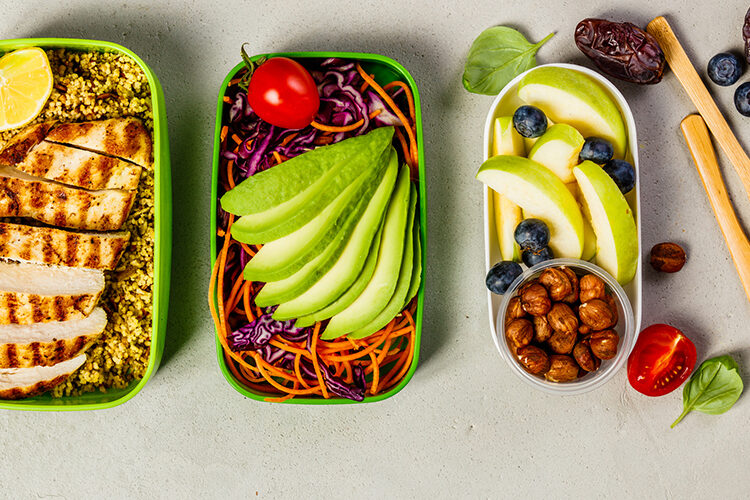
Imagine strolling through a bustling farmers’ market on a crisp Saturday morning, the air filled with the sweet aroma of ripe peaches and the vibrant colors of freshly picked berries. You pause at a stall, eyeing a basket of organic apples, their glossy skins promising a burst of flavor. But then, a question pops into your mind: Are these really worth the extra cost? Buying organic fruits can feel like navigating a maze—labels, certifications, and prices can leave even the savviest shopper second-guessing. As someone who’s spent years decoding the world of organic produce, I’m here to share expert tips to help you make confident, informed choices. Whether you’re a health-conscious parent, an eco-warrior, or simply someone who loves a juicy mango, this guide will empower you to pick the best organic fruits every time.
Why Choose Organic Fruits?
Organic fruits are grown without synthetic pesticides, fertilizers, or genetically modified organisms (GMOs), offering a cleaner, more natural option for you and the planet. According to the Environmental Working Group, conventional fruits like strawberries and apples often carry high pesticide residues, which can pose health risks over time. Organic farming prioritizes soil health, biodiversity, and sustainable practices, making it a win for both your body and the environment. But the benefits go beyond health—organic fruits often taste better, with richer, more authentic flavors. I remember biting into an organic peach at a local farm; it was so juicy and sweet that it felt like summer in every bite. That moment sold me on the organic difference.
However, organic doesn’t always mean perfect. Higher prices, limited availability, and confusion over labels can make buying organic fruits daunting. That’s why knowing what to look for—and what to avoid—is key to getting the most value for your money. Let’s dive into the expert tips that will transform your fruit-buying game.
Understanding Organic Certifications
Before you grab that “organic” apple, check the label. Certifications are your first clue to authenticity. In the U.S., the USDA Organic Seal guarantees that a product meets strict standards—no synthetic pesticides, no GMOs, and adherence to sustainable farming practices. Look for the green and white USDA Organic logo or the words “100% Organic” or “Organic” (meaning at least 95% organic ingredients). In Europe, the EU Organic Logo serves a similar purpose.
Be wary of vague terms like “natural” or “farm-fresh,” which aren’t regulated and don’t guarantee organic practices. I once bought a basket of “naturally grown” cherries, only to learn they were sprayed with synthetic pesticides. Lesson learned: always check for certified organic labels. If you’re shopping at a farmers’ market, ask the vendor about their certification process—many small farms follow organic practices but may not afford formal certification.
Timing Your Purchases: Seasonal and Local Wins
One of the best ways to ensure you’re getting fresh, flavorful organic fruits is to buy in season. Seasonal fruits are picked at peak ripeness, delivering superior taste and nutrition. For example, strawberries in spring or peaches in summer are not only cheaper but also packed with flavor. The USDA Seasonal Produce Guide is a fantastic resource to check what’s in season in your region.
Shopping locally at farmers’ markets or joining a Community Supported Agriculture (CSA) program can also save money and connect you with farmers who prioritize organic methods. I once joined a CSA and received a weekly box of organic fruits—everything from tart cherries to crisp apples. Not only did it save me money, but it also introduced me to new varieties I’d never tried before. Pro tip: ask farmers about “seconds” (slightly imperfect fruits) for a discount—they’re just as tasty for smoothies or baking.
The Dirty Dozen and Clean Fifteen: Prioritizing Your Budget
Organic fruits can be pricier, so it’s smart to prioritize based on pesticide exposure. The Environmental Working Group’s Dirty Dozen lists fruits with the highest pesticide residues, like strawberries, spinach, and apples. These are worth splurging on for organic versions. Conversely, the Clean Fifteen includes fruits like avocados and pineapples, which have lower pesticide levels, making conventional versions safer if you’re on a budget.
Here’s a quick comparison to guide your choices:
Organic vs. Conventional: When to Splurge
| Fruit | Dirty Dozen | Clean Fifteen | Buy Organic? | Reason |
|---|---|---|---|---|
| Strawberries | Yes | No | Yes | High pesticide residue; organic ensures cleaner, safer fruit. |
| Apples | Yes | No | Yes | Thin skin absorbs pesticides; organic apples are safer and often tastier. |
| Avocados | No | Yes | No | Thick skin protects flesh; conventional avocados are low in pesticides. |
| Pineapples | No | Yes | No | Tough rind minimizes pesticide exposure; conventional is usually safe. |
| Blueberries | Yes | No | Yes | Thin skin and high pesticide use make organic a better choice. |
This table helped me stretch my grocery budget without compromising on safety. For example, I always buy organic strawberries but save money by choosing conventional avocados. Use this list to make informed decisions at the store.
Inspecting Fruit Quality: What to Look For
Not all organic fruits are created equal. To get the best quality, train your senses. Here’s how to spot the good stuff:
- Appearance: Organic fruits may not look perfect—slight blemishes or irregular shapes are normal. Avoid fruits with deep bruises, mold, or overly soft spots. For example, organic apples might have small scabs, but they should still feel firm.
- Smell: A ripe organic fruit often has a strong, natural aroma. Sniff peaches or melons near the stem end—if they smell sweet, they’re ready to eat. I once picked a cantaloupe that smelled like honey; it was the sweetest I’d ever tasted.
- Texture: Gently squeeze fruits like avocados or mangoes. They should yield slightly without feeling mushy. For berries, look for plump, vibrant ones without juice stains (a sign of overripeness).
- Taste (if possible): Some farmers’ markets offer samples. Take advantage to ensure the fruit meets your expectations.
The Produce Marketing Association offers great tips on selecting high-quality produce, organic or not. Trust your instincts and don’t be afraid to ask vendors about their harvesting process.
Where to Shop for Organic Fruits
Your shopping venue can make or break your organic fruit experience. Here are the best places to find high-quality options:
- Farmers’ Markets: These are goldmines for fresh, local organic fruits. Vendors often share stories about their farming practices, adding a personal touch. Find a market near you through LocalHarvest.
- Grocery Stores: Chains like Whole Foods or Trader Joe’s stock certified organic fruits, often with clear labeling. Check for sales or bulk deals to save money.
- Online Retailers: Services like Imperfect Foods deliver organic and “ugly” fruits at a discount, reducing food waste. I’ve used them for affordable organic citrus, and the quality was surprisingly good.
- Co-ops and CSAs: Joining a co-op or CSA connects you directly with farmers, often at lower costs. You’ll get a variety of seasonal fruits and support local agriculture.
Each option has its perks, so mix and match based on your budget and lifestyle. For example, I hit the farmers’ market for berries but rely on online deliveries for bulk items like oranges.
Storing Organic Fruits for Maximum Freshness
Organic fruits often lack the preservatives used in conventional farming, so proper storage is crucial to avoid waste. Here’s how to keep your haul fresh:
- Berries: Store in the fridge in a single layer on a paper towel-lined container to prevent mold. Rinse only before eating to avoid excess moisture. The University of California Agriculture has great storage tips for berries.
- Stone Fruits (Peaches, Plums): Keep at room temperature until ripe, then refrigerate to extend shelf life. Place in a paper bag to speed up ripening.
- Apples: Store in the fridge’s crisper drawer in a perforated plastic bag to maintain humidity. They can last up to a month this way.
- Citrus: Keep in a cool, dry place or refrigerate for longer storage. Oranges and lemons stay fresh for weeks when stored properly.
I once lost a batch of organic raspberries to mold because I stored them in a sealed container. Now, I follow these tips religiously, and my fruits stay fresh longer.
Budget-Friendly Tips for Buying Organic
Organic fruits can strain your wallet, but these strategies can help you save:
- Buy in Bulk: Purchase larger quantities of in-season fruits like apples or citrus, which are often cheaper. Freeze extras for smoothies or baking.
- Shop Sales: Check weekly flyers from stores like Whole Foods or Sprouts for organic deals. Apps like Flipp make it easy to compare prices.
- Choose Frozen or Canned: Frozen organic berries or canned organic peaches are budget-friendly and retain nutrients. Just check for no added sugars.
- Grow Your Own: If you have space, plant a fruit tree or berry bush. I started growing organic strawberries in pots, and it’s been a game-changer for both cost and freshness.
These tips have helped me enjoy organic fruits without breaking the bank. For instance, buying frozen organic blueberries for smoothies saves me money year-round.
Debunking Organic Myths
Misconceptions about organic fruits can cloud your judgment. Let’s clear up a few:
- Myth: Organic fruits are always more nutritious. Truth: While organic fruits avoid harmful pesticides, their nutritional content is often similar to conventional fruits, per Harvard Health. The real advantage lies in reduced chemical exposure and better taste.
- Myth: All organic fruits are pesticide-free. Truth: Organic farms use natural pesticides, which are safer but still present. Always wash your fruits thoroughly.
- Myth: Organic is just a marketing scam. Truth: Certified organic standards are rigorous, ensuring sustainable practices and transparency.
Understanding these truths helps you make informed choices without falling for hype or skepticism.
FAQ: Your Organic Fruit Questions Answered
Are organic fruits worth the extra cost?
Yes, especially for Dirty Dozen fruits like strawberries and apples, which have high pesticide residues. If budget is a concern, prioritize organic for these and opt for conventional Clean Fifteen fruits.
How can I tell if a fruit is truly organic?
Look for the USDA Organic or EU Organic logo. At farmers’ markets, ask vendors about their farming practices or certifications to verify authenticity.
Do organic fruits taste better?
Many people, including me, find organic fruits tastier due to natural growing methods and peak harvesting. However, taste varies by variety and freshness.
Can I trust store brands for organic fruits?
Most reputable stores like Whole Foods or Trader Joe’s adhere to strict organic standards. Always check for certification labels to be sure.
How do I store organic fruits to avoid waste?
Store berries in the fridge with proper ventilation, keep stone fruits at room temp until ripe, and refrigerate apples and citrus in breathable bags. Rinse only before eating.
Are frozen organic fruits as good as fresh?
Yes, frozen organic fruits retain most nutrients and are often picked at peak ripeness. They’re a cost-effective option for smoothies or cooking.
Conclusion: Making Organic Fruits a Delicious Part of Your Life
Buying organic fruits is more than a health choice—it’s a commitment to better taste, sustainability, and supporting farmers who care about the earth. From understanding certifications to prioritizing the Dirty Dozen, these expert tips can help you navigate the organic aisle with confidence. Whether you’re savoring a crisp organic apple or blending frozen berries into a smoothie, the right choices make every bite rewarding. Start small: visit a farmers’ market, try a CSA, or grow a few strawberries on your balcony. Each step brings you closer to a healthier, tastier, and more sustainable lifestyle.
Reflect on your priorities—health, flavor, or budget—and use resources like the USDA or EWG to stay informed. Next time you’re at the store, pause, inspect that fruit, and choose with intention. Your taste buds and the planet will thank you.
